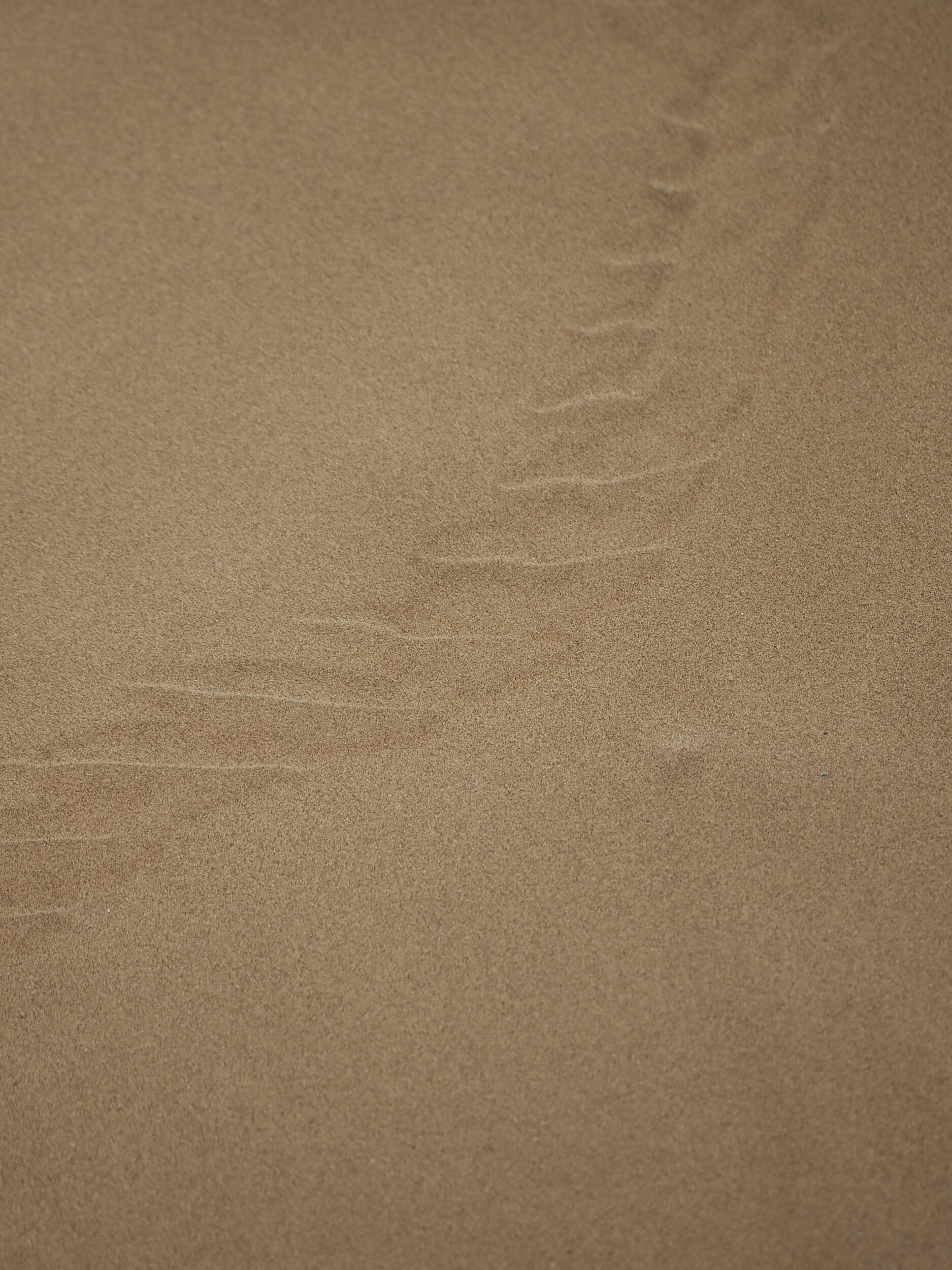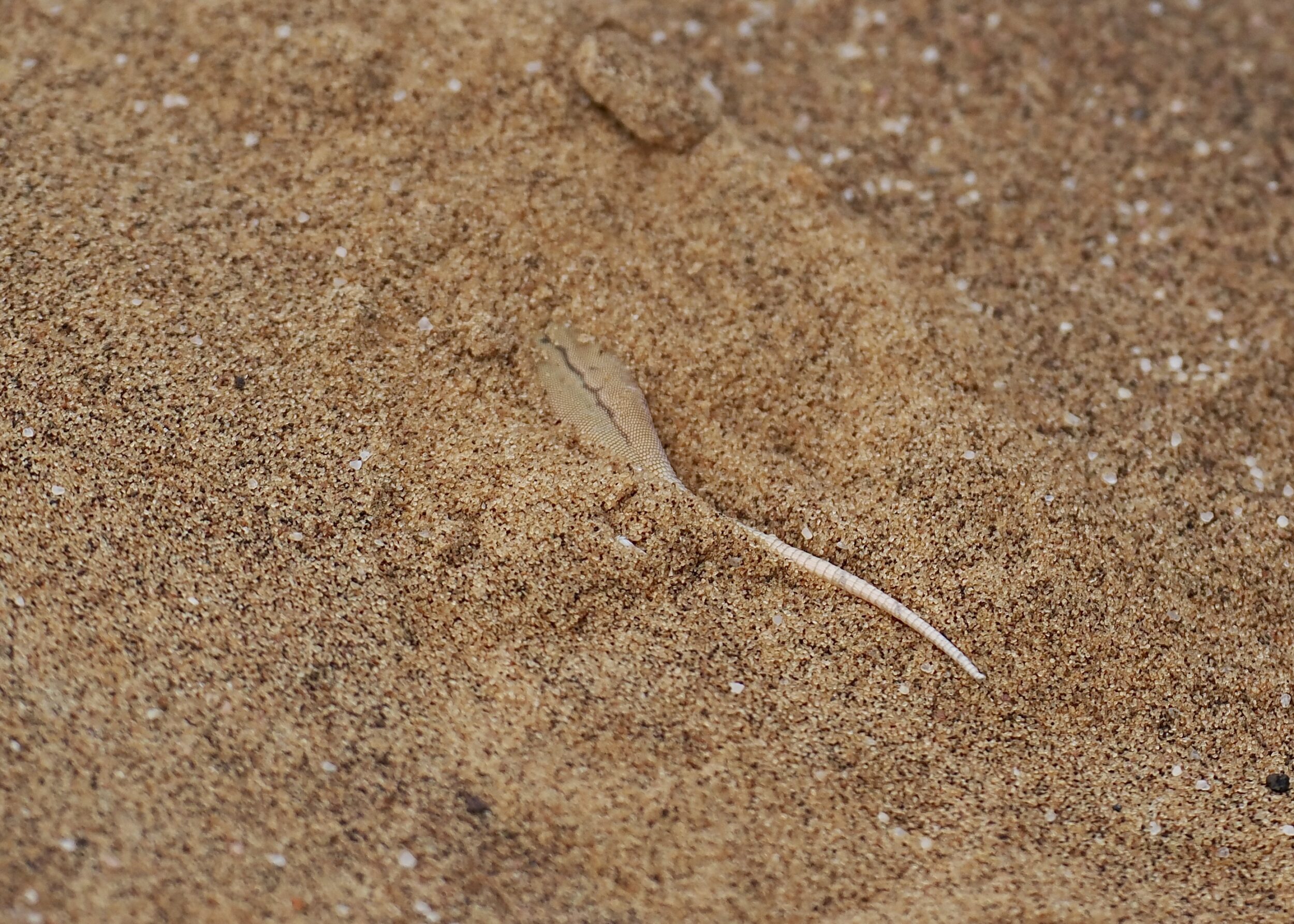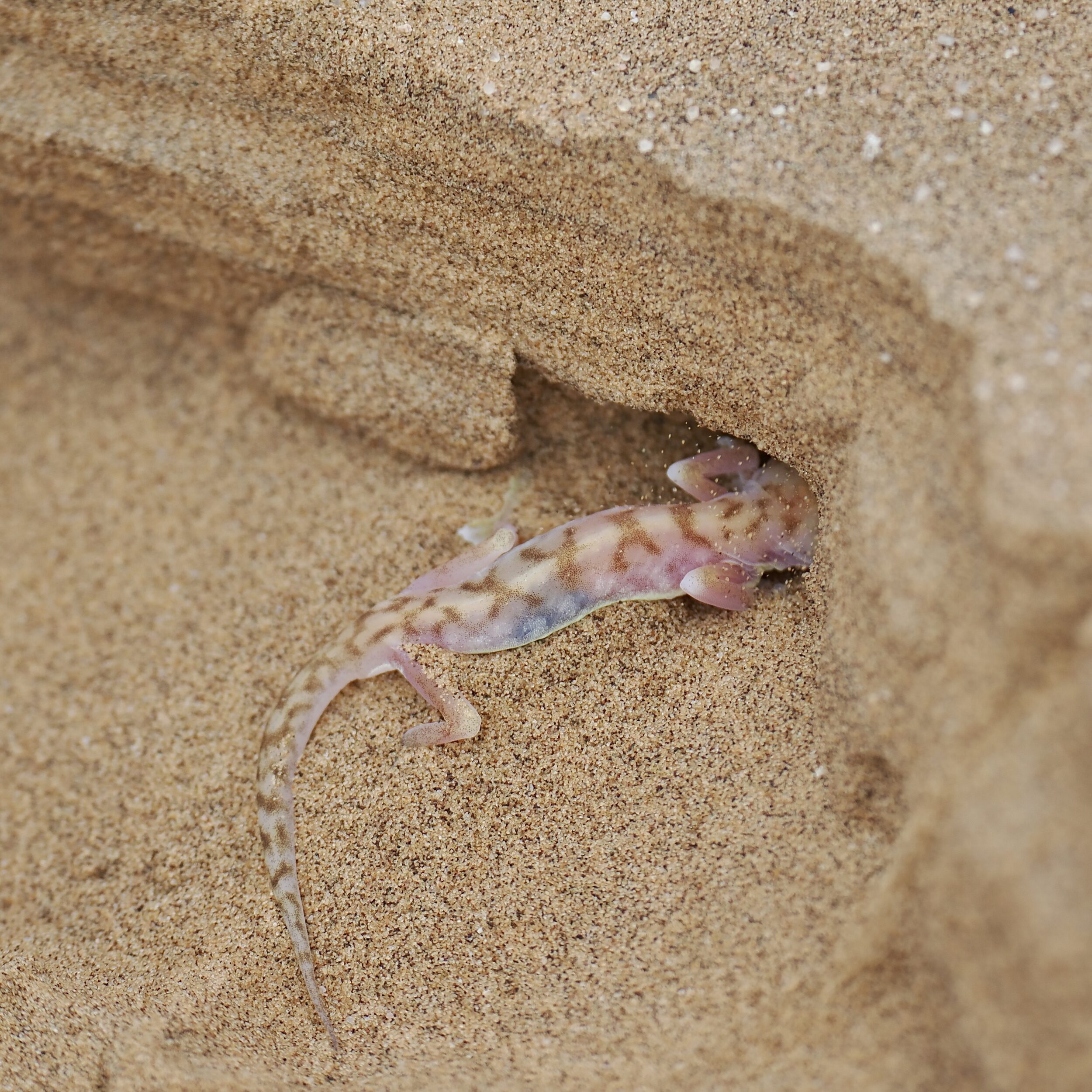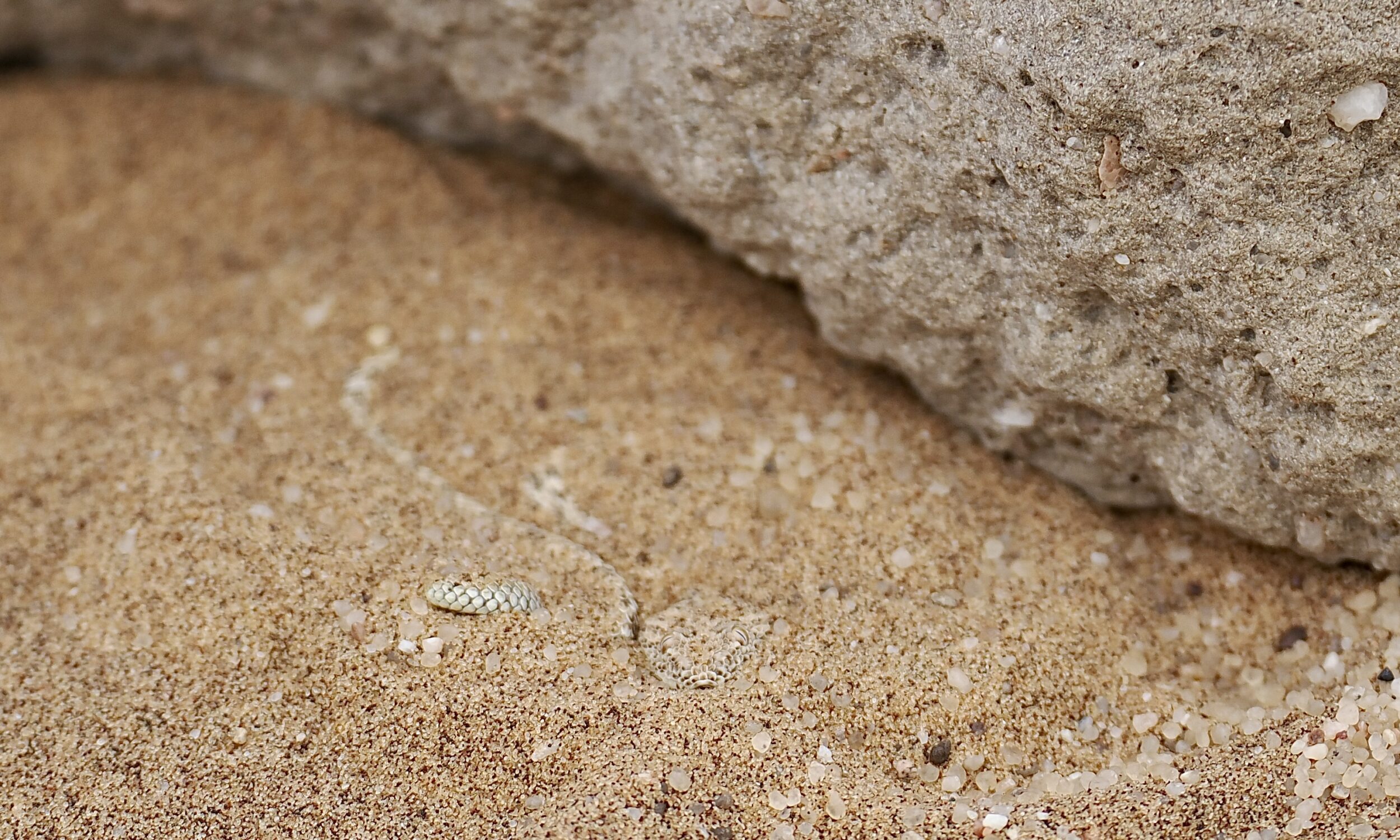Just visible in the featured image: a “lizard specialist” predator, awaiting an ambush opportunity.
Immediately below: the “footprints” this predator leaves behind, when ascending the face of a dune:

Below, very rapidly “disappearing from view”: one of the lizards in which the aforementioned adder “specialises”.

The speed with which this lizard can “disappear” has to be seen to be believed; this ability is in large measure due to it having what one zoologist has described as a “sandodynamic” snout!
Utterly different in appearance: the gecko below, which is also exquisitely adapted to the particular exigencies of survival in the world’s oldest desert.

All three species in this post are both “predatory” and “prey” animals; each hides in sand in order to ambush its prey, and in order to evade its predators.
In a whole lot of ways, sand is both “solution” and “problem”.
Another example: a sandy surface can be lethally hot, but the sand below it can offer a cool refuge.
Where frequent sea-mists are also part of the equation, “managing” life on/ in the Namib’s sands involves a wider range of problems and opportunities than those present in most other deserts.
The next three posts will identify each of this post’s three heroes and enable you to see their “naked”, full selves.
The third of them will also link you to an amazing video.
